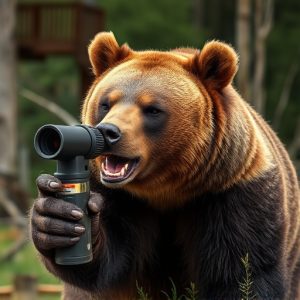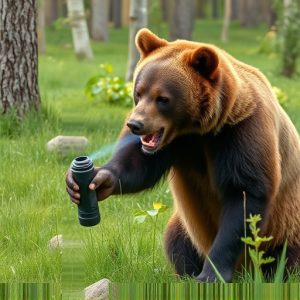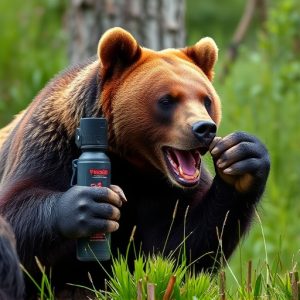Mastering Alaska’s Bear Spray Safety: Understanding Fog Pattern & Navigation
Understanding wind direction is critical for maximizing the effectiveness of bear spray in Alaska, w…….
Understanding wind direction is critical for maximizing the effectiveness of bear spray in Alaska, where it shapes the fog pattern and coverage. Before heading into bear country, check your spray's functionality and practice usage. During encounters, stay calm, assess the bear's behavior, and aim the spray towards its face at a slight angle upwards. Combining bear spray with defensive measures ensures safety while exploring Alaska's wild landscapes.
Alaska’s rugged landscape presents unique challenges when it comes to bear spray fog patterns, especially when understanding wind direction. This guide delves into the best practices for ensuring your safety in bear country. By navigating and responding appropriately during encounters, you can minimize risks. Learn how wind direction influences bear spray effectiveness and gain valuable insights to handle these powerful tools effectively. Master the art of staying safe in Alaska’s wild environments.
- Understanding Wind Direction and Bear Spray Fog Pattern
- Best Practices for Bear Spray Safety in Alaska
- How to Navigate and Respond During Bear Encounters with Bear Spray
Understanding Wind Direction and Bear Spray Fog Pattern
Understanding wind direction is a crucial aspect of bear spray safety in Alaska. When carrying and deploying bear spray, it’s essential to consider how the wind might affect the fog pattern. The direction and strength of the wind can significantly impact the reach and effectiveness of the spray, determining where the fog cloud will travel and settle. In a headwind, the spray mist is carried directly toward the bears, allowing for optimal defensive coverage. Conversely, in a tailwind, the fog pattern spreads out behind you, potentially leaving a gap in protection if bears are approaching from the rear.
Knowing these patterns allows outdoor enthusiasts to make informed decisions while navigating through bear country. Adjusting positioning and spray deployment techniques according to wind conditions can ensure better safety and effectiveness during encounters with bears. Always remember that understanding wind direction is as vital as knowing how to use the spray itself, contributing to a safer experience in Alaska’s wild landscapes.
Best Practices for Bear Spray Safety in Alaska
When it comes to bear spray safety in Alaska, understanding the wind direction is paramount. It’s best to always assume that spray will travel directly toward you and then slightly downwind, as bears can effectively use their strong sense of smell even when fog or mist are present. Before heading into bear country, ensure your bear spray is properly serviced, the nozzle is clean, and the safety strap is functioning correctly. Practice with the spray in calm conditions before venturing out so that you’re comfortable with its range and effectiveness.
Additionally, keep your bear spray readily accessible, preferably within arm’s reach, and always follow the 3-step rule: observe, assess, and act. If you see a bear, make yourself visible by shouting or waving your arms to deter it from approaching. Assess the bear’s behavior and distance; if it doesn’t seem aggressive but is close, use bear spray. Aim for the face and eyes, creating a large fog pattern as bears are sensitive to these areas. Act quickly and calmly, ensuring every member of your group follows protocol simultaneously.
How to Navigate and Respond During Bear Encounters with Bear Spray
When encountering a bear while outdoors in Alaska, understanding how to navigate and respond is crucial for your safety. If you find yourself face-to-face with a bear, remain calm and assess the situation. Keep an eye on the bear’s behavior; if it shows signs of aggression or curiosity, prepare to use your bear spray.
Bear spray creates a fog pattern that can deter bears by irritating their eyes and respiratory system. To ensure maximum effectiveness, remember the wind direction. Aim for the bear’s face and front, spraying slightly upwards. This technique allows the spray to wrap around the animal, creating a protective barrier. Always keep a safe distance, as bear spray is not a replacement for proper defensive measures but rather a valuable tool in your outdoor safety kit.
Understanding wind direction is key to effective bear spray safety in Alaska. By knowing how the fog pattern spreads, you can make informed decisions during encounters, ensuring your protection and the preservation of these majestic bears’ habitats. Always follow best practices, stay alert, and use bear spray responsibly to navigate and respond safely in the wild.


